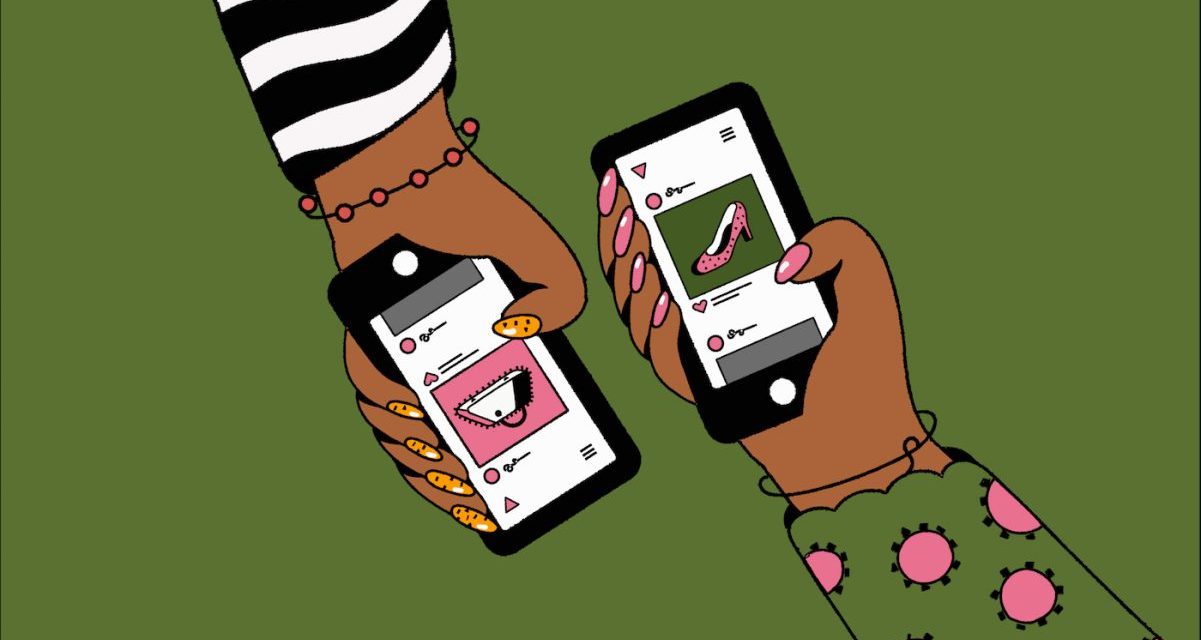More than half of e-commerce Cyber Week sales came from mobile

Rather than lining up in pre-dawn hours for Black Friday doorbusters at big-box retailers, more than half of shoppers took advantage of the holiday deal season by shopping on their mobile devices.
This year’s Cyber 5 data shows that mobile shopping has officially overtaken desktop sales for Cyber Week, or the five-day stretch from Thanksgiving to Cyber Monday. Adobe Analytics reports that this year, about 51.8% of online sales came from mobile shoppers,up from 49.9% last year and 46% the year before that. Many DTC online brands, including Kendra Scott and Apothekary, derived a majority of their Cyber 5 sales from mobile shoppers.
On Thanksgiving Day alone, 59% of online spending came from mobile, a record hight beating last year’s of 55%.
The data shows how shoppers are becoming more comfortable buying from their phones, part of the post-pandemic acceleration of online shopping. But behind the screen, brands have gotten better optimizing their sites for mobile and finding ways to connect with those users — tweaking small aspects like load time and navigation to keep the user scrolling and shopping. They’re also finding new ways to market to customers on their phones, with brands like Forever 21 focusing their Cyber5 strategies on text message marketing to ensure personalized and timely deals.
Tom Nolan, CEO at Kendra Scott, told Modern Retail that about 80% of all online traffic came from mobile shoppers, who also showed more engagement and transactions than they did last year. All four of the brand’s doorbuster deals — like a special edition $25 version of its best-selling Elisa necklace — sold out before 9 a.m., contributing to a 25% year-over-year sales life from DTC channels.
Nolan partly attributed the high mobile traffic to how the brand has improved its online experience, like with a virtual try-on feature and data-driven personalization.
“One of the things that the team spends a lot of time doing is optimizing mobile experience,” Nolan said. “They’ve really done a nice job of making it as immersive as possible without slowing down the process, and getting people to the basket and exiting as quickly as possible.”
Direct-to-consumer wellness brand Apothékary saw 81% of its sales come from mobile, up from 74% last year. Founder Shizu Okusa said the rise is due to an accumulation of internal and external factors. Earlier this year, Apothékary did a rebrand that included the launch of a mobile-friendly site. It also increased its budget for influencer marketing and affiliate this year, and diversified its ad spend to reach more customers online.
Okusa said that Apothékary noticed a spike in traffic and sales in the late afternoon of Black Friday, or around 4 p.m. eastern, when people may be settling in with their phones for the night.
“It’s Black Friday and people are thinking, “Let me treat myself one last time before we go we are buying everything for Christmas,” she said.
But there is also a larger behavioral component. Okusa said many shoppers who come to Apothékary may be scrolling Instagram, which “has become a food channel, you see so many recipes and healthy lifestyles and ‘a day in the life’ of what I ate.”
“That’s what you’re seeing, you’re getting more content about that, so you go and buy it,” she said.
Okusa also credits the way that platforms have made mobile a priority for a shopping experience. Shopify reports that it saw a 60% year-over-year increase in sales made via its one-tap checkout service Shop Pay. She added that Instagram’s shopping experience has improved.
“We see very specific channel by channel discounts, and promotions,” Okusa said. “Last year, I didn’t think ShopPay was as big of a deal.”
The increase in mobile transactions also reflects the ways that a checkout experience can make or break a shopper’s purchase. Similarly, Buy Now, Pay Later service Zip saw 90% of its transactions come from mobile users. Jinal Shah, CMO at Zip said that apps and digital wallets that save people’s information spares them from having to go inout their credit card data.
“It’s all integrated,” she said.
But the mobile trend goes beyond the holiday blitz. Per Adobe, year-to-date spending on mobile hit $409 billion, up from $362 billion last year and $317 billion 2021. On a daily basis, average revenue share from mobile is at 47%, up from 44% last year and 41% percent in 2021.
“I don’t think that’s going to change,” Nolan said. “That’s been the new normal for awhile, and I think it’s going to continue.”

